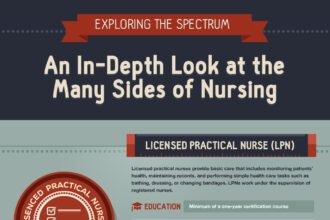Uwe E. Reinhardt, an economics professor at Princeton, responded to a July 28, 2012, New York Times article, “Doctor Shortage Likely to Worsen with Health Law,” by questioning what exactly we meant by a doctor shortage. I cannot deny the potency of Reinhardt’s question: It is the crux of the matter.
Uwe E. Reinhardt, an economics professor at Princeton, responded to a July 28, 2012, New York Times article, “Doctor Shortage Likely to Worsen with Health Law,” by questioning what exactly we meant by a doctor shortage. I cannot deny the potency of Reinhardt’s question: It is the crux of the matter. Unfortunately, Reinhardt chooses to address it with arguments constructed around state-level physician-to-population ratios, which is not the best approach. Those ratios are no more than that — ratios. As such, they provide little or no insight into what constitutes a shortage, much less lead us to accurately define and address what those shortages are.
In response to the ratio-dependent queries with which Reinhardt leaves his readers, I suggest a new set of questions that will take such an important discussion in different directions and specifically target needs:
1. Access. Given that not everyone in the country has access to quality health care (I know of no one who would even suggest otherwise), we should begin by asking: Who has the most difficulty gaining access to quality health care? Why? Are the barriers they face growing over time? And if they are, who is most likely to join the ranks of those with problems accessing care?
2. Demand. The original New York Times article rightly mentions several factors likely to drive up demand for health care, physician services specifically. These include an aging population and implementation of the Affordable Care Act (ACA). My next questions are: What will this demand look like? How will the underlying health needs shape it? And how will we meet it?
3. Delivery. The United States cannot meet this high demand solely by increasing the production of physicians. More physicians will be needed, but new models of care will also be essential. How, where, and by whom care is delivered must embrace a renewed emphasis on prevention and care coordination. (Provisions of the ACA explicitly acknowledge this, providing support for new models of care.) How do we transform the way we deliver care in order to meet the need we know we will have, where and when we ought?
4. Capacity. Reports of the increasing prevalence of physicians refusing to accept new Medicaid patients do not bode well for our nation’s health, much less for the ultimate effectiveness of ACA implementation. The health care access conditions of current Medicaid recipients are the closest approximation we have of what the newly insured will face when ACA’s health insurance expansion hits the ground.
This leads us to another aspect of the “invisible problem”: the limits of current capacity. Office visits can only be shortened so much, and waiting times extended only so far. The nation’s health care safety net workforce, emergency department and community clinic staff around the country, see this play out every day as they absorb what the rest of our strained health care system cannot accommodate.
We need to know: Where are our capacity limits? And as we approach them, what are the effects on quality of care and, at the end of the day, on health outcomes? What can we do to reduce pressure on our health care safety net workforce? And what can we do to support it?
5. Disparity. Where do we actually need to build what types of health care capacity? And how do we best do that? State-level physician-to-population ratios may appeal as a starting point, but the reality of physician shortages is more complicated than that. Who has access to care varies from household to household, neighborhood to neighborhood, and town to town. Understanding who in those places faces the greatest access barriers requires us to consider how individual conditions like health insurance and socioeconomic status, and individual characteristics like health status and race, affect access to health care.
Understanding which populations have the most trouble obtaining care is the first step. Developing innovative approaches to delivering care to them is the next. In order to take those steps, we need to ask the right questions. And, following Reinhardt’s laudable example, I will contemplate them as we all work toward answers, but also — and more importantly — toward better questions. I look forward to your comments.
 —Michael J. Dill is a Senior Data Analyst at the Association of American Medical Colleges. He can be reached at MDill@aamc.org.
—Michael J. Dill is a Senior Data Analyst at the Association of American Medical Colleges. He can be reached at MDill@aamc.org.
Filed under: Commentary, Newsroom, Patient Access
![]()





